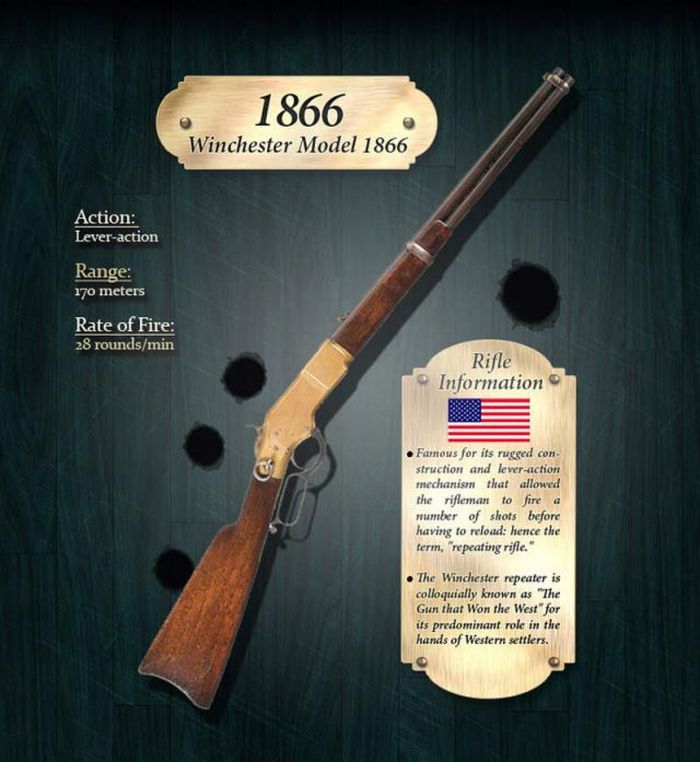|
|
The Evolution Of The Rifle
|
• Range
Barrel rifling dramatically increased the range and accuracy of the musket. Indeed, throughout its development, the rifle's history has been marked by increases in range and accuracy. From the Minié rifle and beyond, the rifle has become ever more potent at long range strikes.
In recent decades, large-caliber anti-materiel rifles, typically firing 12.7 mm and 20 mm caliber cartridges, have been developed. The US Barrett M82A1 is probably the best-known such rifle. These weapons are typically used to strike critical, vulnerable targets such as computerized command and control vehicles, radio trucks, radar antennae, vehicle engine blocks and the jet engines of enemy aircraft. Anti-materiel rifles can be used against human targets, but the much higher weight of rifle and ammunition, and the massive recoil and muzzle blast, usually make them less than practical for such use. The Barrett M82 is credited with a maximum effective range of 1,800 m (1.1 mi); and it was with a .50BMG caliber McMillan TAC-50 rifle that Canadian Master Corporal Rob Furlong made the longest recorded (until 2010) confirmed sniper kill in history, when he shot a Taliban fighter at a range of 2,430 m (1.51 mi) in Afghanistan during Operation Anaconda in 2002.
Since then a British Army sniper beat the Canadian's record by 150 ft (46 m), by killing two Taliban insurgents at a range of 8,120 ft (2,470 m). He was using a standard issue British Army sniper rifle, the L115A3.
|
|









